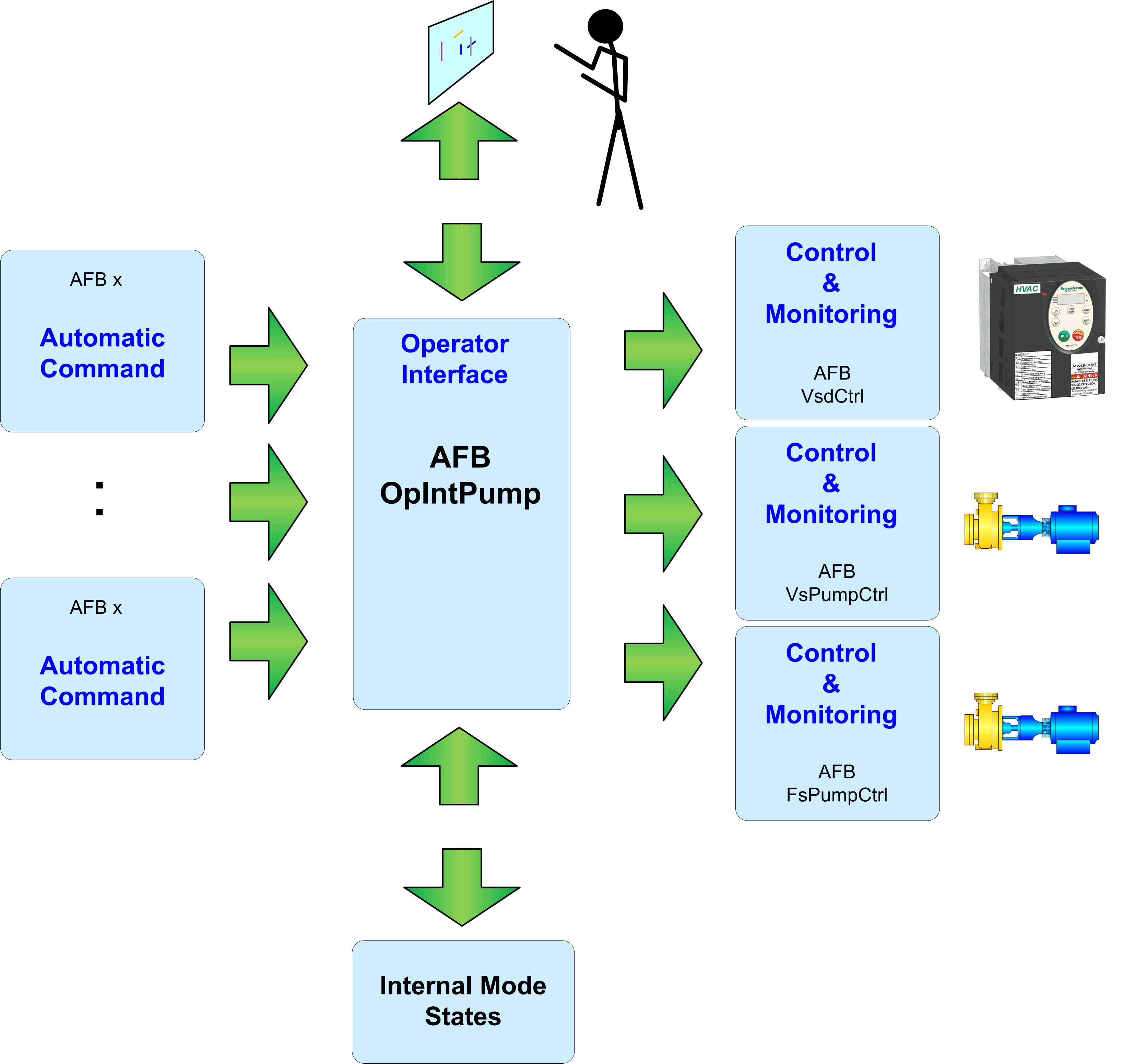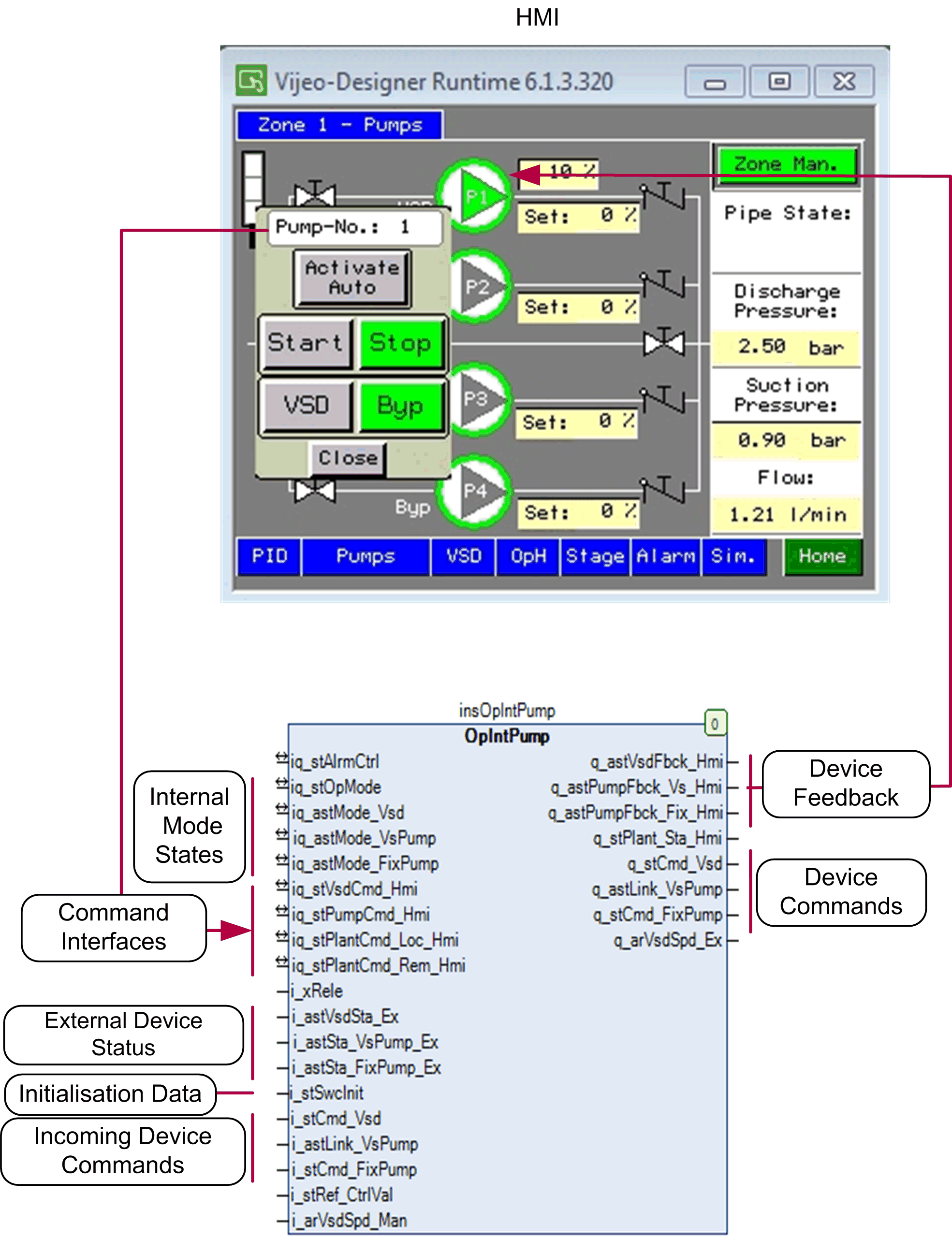The OpIntPump function block allows the operator to influence the pumping application via inputs on an HMI terminal. This application function block represents the interface from the pump application to the potential HMI. The handling and the architecture of the HMI application is not part of this document.
The figure illustrates the different inputs and outputs of the OpIntPump function block:

The OpIntPump function block executes the following tasks:
oIt detects states and modes of the individual pumps, VSDs, and of the pumping application.
oIt transforms states and modes of the individual pumps, VSDs, of the pump group, and of the pumping system into short integer values. This helps to save configuration times when assigning HMI symbols. During operation, it helps to optimize communication exchanges.
oIt receives automatic commands for the VSDs, pumps, and for the auxiliary pump. If the pumping application is running in automatic mode, it forwards these commands consecutively to the outputs.
oIt receives operator commands from the HMI and forwards them if the pumping application is running in automatic mode.
oIt verifies the operating mode of the pumping application:
oIf it is running in manual mode, then it accepts only the commands from the HMI.
oIf it is running in automatic mode, then it accepts only the internal commands.
oWhen a pump or VSD is in hand or maintenance mode and is subsequently released, the OpIntPump function block reassigns the previous mode that was valid in the pumping application for this device.
oIt allows the operator to assign the control of the application to a local or a remote HMI.
The graphic illustrates the relationship between the input and output pins of the OpIntPump function block and the information provided on the HMI.
